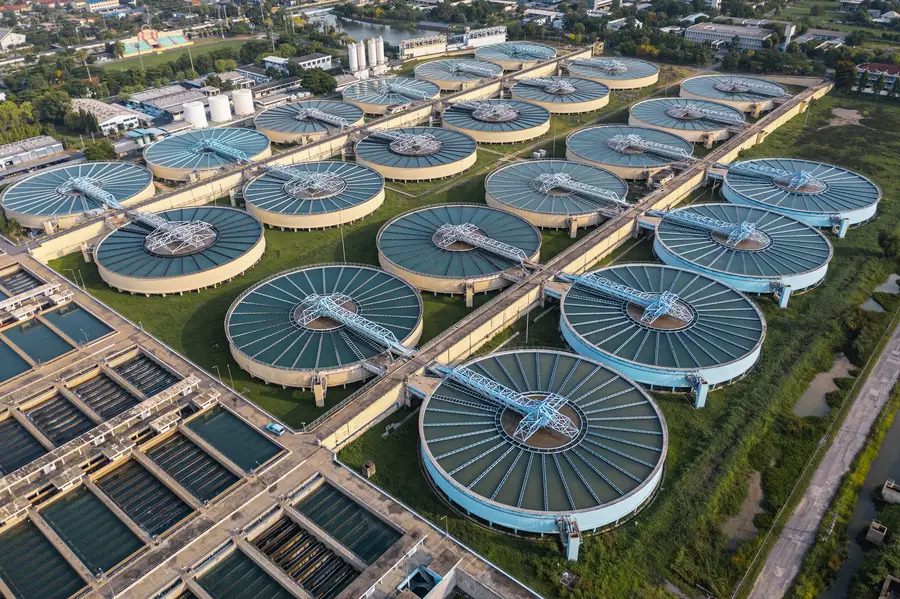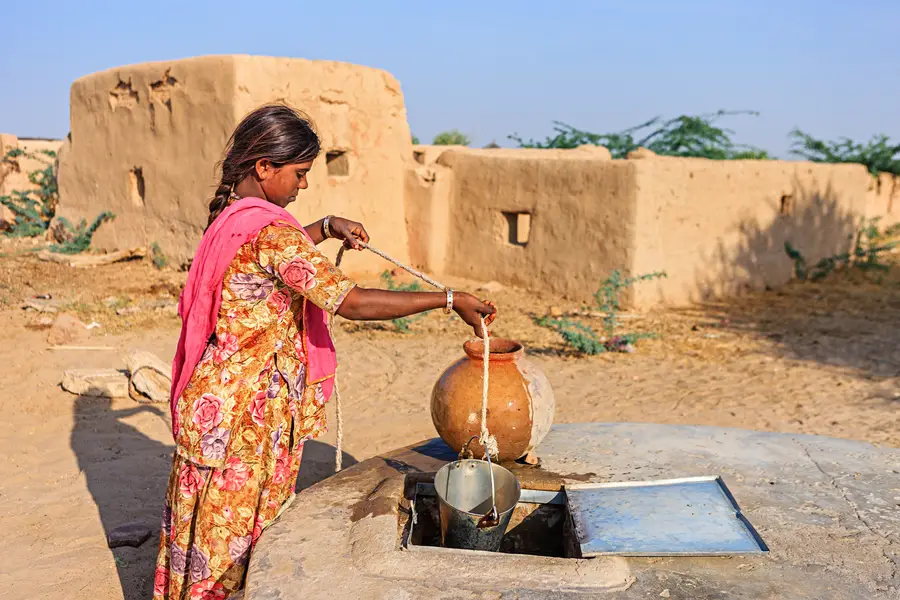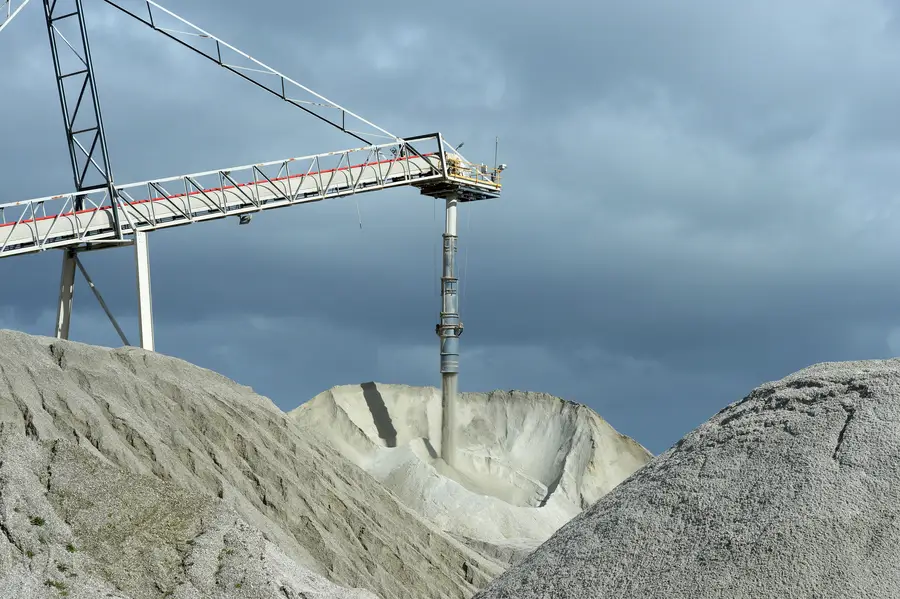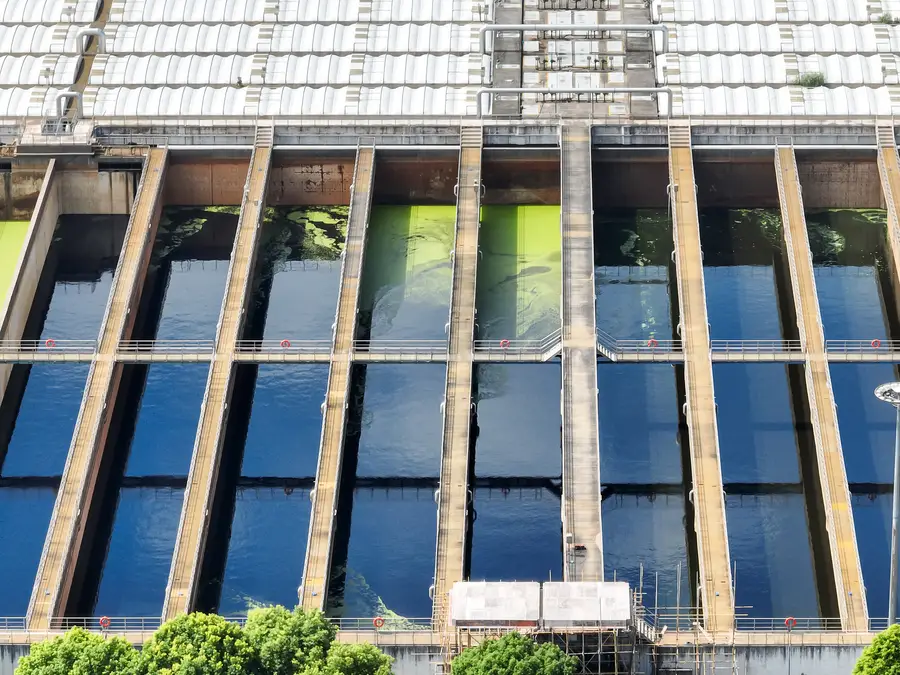
Arial view of water treatment plant. Credit: Suriyapong Thongsawang/Getty Images
We all know that water is vital to human existence, but what does it mean to truly value water?
This year’s World Water Week (2022 WWW), held in Stockholm, Sweden, from August 23 to September 1, focused on further elevating the crucial role of water, especially its availability, accessibility, and quality as affected by the impacts of climate change.
In one session, authors of the Intergovernmental Panel on Climate Change (IPCC) Assessment summarized that the climate crisis is a water crisis. And yet water remains overlooked in climate negotiations. The Glasgow Climate Pact, the outcome of the 2021 United Nations Climate Change Conference (COP26) which was attended by diplomats from almost 200 countries, included no mention of water.
As a first-time attendee at World Water Week, I’d like to share what I heard and call attention to this threatened natural resource. Throughout the week, the bottom-line message and clear take-away was: We cannot leave water out of climate conversations.
“Unseen” Water and Climate Change
While “seen” water is usually thought of as the tangible elements of surface water—lakes, streams, seas and even glaciers—2022 WWW brought attention to those elements that tend to be undervalued because they are “unseen,” such as groundwater and water in industry.

Groundwater
Groundwater, or water found under the surface in saturated zones, is perhaps the most obvious example of water that is “unseen.” A large percentage of the world’s population relies on groundwater for drinking, livelihoods, and industry. According to the UN World Water Development Report, “Groundwater: Making the invisible visible,” not only does groundwater account for 99% of all liquid freshwater, 50% of water supplied to the global urban population and 25% of water used in irrigation, groundwater also “provides the only feasible and affordable way to extend basic access to unserved rural populations.”
As the frequency of droughts and heat waves intensify with the changing climate, groundwater stores—due to their slow-moving nature and relative insulation—provide water sources in water-stressed areas of the world, sustaining natural ecosystems and livelihoods when surface water cannot and improve water security. Continuing to undervalue the importance of groundwater and to neglect its protection will render millions of people vulnerable in terms of food security and drinking water.
Water in Industry
Water is also a critical component of many vital supply chains and industries. For example, while electric vehicles (EVs) and the transition away from fossil fuels is a key part of climate mitigation efforts, EVs require massive amounts of water in their production. EVs require double the amount of chips (semiconductors) as standard vehicles, and the production of chips requires large amounts of ultra-pure water (UPW) at multiple points to rinse impurities and prevent contamination. The production of UPW itself is water intensive: 1500 gallons of regular water are required to produce 1000 gallons of UPW. In addition to the chips, the mining of the lithium required for the batteries powering EVs also requires a water-intensive process, usually in already water-stressed areas of the world. Taking Chile as an example, it takes roughly 500,000 gallons of water to extract one ton of lithium, stressing an already scarce water supply and running the risk of water contamination and environmental degradation.
As the world moves to reduce carbon emissions, the risks of contaminated water, environmental degradation, and water scarcity must be weighed in climate policy decisions. Industries and companies also need to prioritize how water constraints can pose a business sustainability risk and consider their role toward a solution. As an example, the world’s largest semiconductor foundry, Taiwan Semiconductor Manufacturing Company (TSMC), is putting in place ambitious water reduction and reclamation goals.

Lithium ore falls from a chute onto a stockpile at a facility in Australia. Credit: Carla Gottgens/Bloomberg Creative Photos
Water as a Peacebuilder
The idea of water as a source of peace and cooperation (as opposed to the more common discussion of water—or water shortages—as a source of conflict) was the focus of several sessions at 2022 WWW.
Again, the dichotomy between “seen” and “unseen” water was evident. Primary emphasis is often given to transboundary surface waters shared by two or more countries (“seen” water), while the vital role of transboundary groundwater (or aquifers) (“unseen” water) is largely ignored despite there being 468 transboundary aquifers (TBAs) compared to just 276 transboundary basins.
The opportunity for cooperation and conflict reduction that water-related agreements bring is significant. Israel and Jordan, for example, began meeting to discuss water cooperation in the 1950s despite the absence of a formal peace agreement. As discussed at 2022 WWW, when two or more countries can jointly agree to assess a TBA, the exchange of information supporting each other’s goals and the plan to protect the shared groundwater can also encourage international cooperation that lowers the risk of water shortages, strengthens relationships, and reduces the risk of tension and armed conflicts.
An Unseen Value of Water – the Reuse of Water
Perhaps not quite unseen, but certainly undervalued, is the reuse of “used water,” or wastewater for direct or indirect potable use. One of the 2022 WWW seminars focused on valuing wastewater highlighted the largest indirect potable reuse facility in the world in Orange County (OC), California. There, the groundwater basin provides 77% of the drinking water supply to 2.5 million people in north and central Orange County. As a limited resource, the OC groundwater basin requires regular recharge, of which 30% annually is comprised of recycled wastewater that goes through a rigorous three-step purification process.

Water treatment plant. Credit: sinology/Getty Images
Water reuse or recycling is also crucial for irrigation, industrial use, and other purposes; however, energy and infrastructure barriers, among other constraints, make wastewater treatment and recycling options limited in many countries. Nevertheless, the huge potential economic payoff, in addition to improved water security and climate benefits highlight the importance of the reuse of wastewater as an option.
In closing, one statement stuck out to me during a 2022 WWW session: anthropogenic [or human-caused] climate change is not humanity’s most urgent crisis, [but] the most imminent threat is “the very real freshwater and food crisis looming.” No matter the terminology—climate crisis, food crisis, water crisis—or the varying degrees of urgency placed on each by different stakeholders and interested parties, what is clear to me is that we can’t find solutions to counteract the effects of climate change or food shortages or even pandemics without focusing on water access and quality. At RTI, I’m proud to bring awareness to the critical role of water and to work on integrated, sustainable solutions in both “seen” and “unseen” water.

